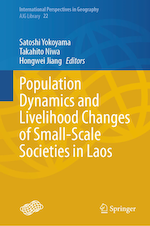
Prof. Satoshi YOKOYAMA Ph.D. [Graduate School of Environmental Studies, Nagoya University]
This is the personal homepage of Satoshi Yokoyama, geographer, working for Department of Geography, Graduate School of Environmental Studies, Nagoya University. My research interests lie in the field of human-nature interactions. In particular, I have conducted research on changes in land and forest use, natural resource use and population dynamics in mainland Southeast Asia. Recently, I have been focusing on the relationship between livelihoods and food culture in Asia and the Himalaya. In this site, "Learning from the Fields", I introduce research I have achieved by learning a lot from nature and people in the field.
Discipline: Cultural Geography (Cultural ecology, political ecology, and food culture in traditional societies), and Southeast Asian Studies (especially Laos)
